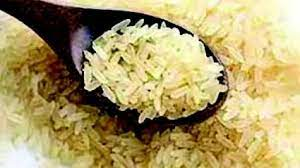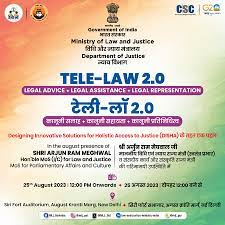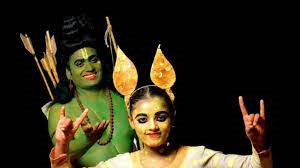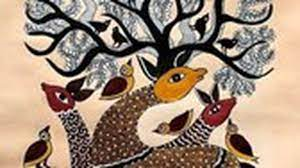Daily News Analysis.
Coil Guns (GS-3)
News: The world’s most potent coil gun is apparently being tested by the Chinese navy.
- Coil Guns are a form of electromagnetic weapon that can fire projectiles at breakneck speeds in a single instant.
- They are also referred to as magnetic accelerators or Gauss guns.
- It uses electromagnetism to drive a projectile and functions on the electromagnetic induction concept.
- The barrel of coil guns is lined with a number of coils, each of which represents a stage.
- One coil at a time is given energy to produce a magnetic field that can levitate and launch a projectile.
- During launch, the projectile usually hangs suspended in the coil’s middle.
- A coil gun’s capacity to fire projectiles identical to those launched by conventional artillery increases with its size.
- Typically, a ferromagnetic projectile or other ferrous or magnetic item, such as a steel ball, is used as the projectile in a coil gun.
- To interact with the electromagnetic fields produced by the coils, this projectile needs to possess magnetic characteristics. Export Duty of 20% is applied.
20% Export Duty On Parboiled Rice: (GS-3)
News: Recently, parboiled rice was subject to a 20% export duty by the Central Government.
- Prior to being processed for consumption, parboiled rice, also known as converted rice, is partially precooked in its inedible husk.
- Before rice is milled, or before the outer, inedible husk is removed to produce brown rice but before brown rice is refined to create white rice, it takes place.
- Since the beginning of time, people have been parboiling rice in several Asian and African nations because it makes it simpler to remove the husks by hand.
The key procedures for parboiling include
- Rice that has not been husked or cooked, sometimes referred to as paddy rice, is soaked in warm water to enhance moisture.
- Rice is steam-cooked until the starch turns into a gel. This procedure’ heat also aids in the destruction of bacteria and other organisms.
- Drying: To make the rice more millable, the moisture level is slowly reduced through drying.
- Husking: The outer husk is removed by milling the partially cooked, dried rice. As a result, rice is parboiled.
- Rice that has been parboiled has a better texture, a longer shelf life, and is healthier.
- White rice is lower in protein and fibre than parboiled rice.
- Rice that has been parboiled is less sticky and produces fluffy, distinct kernels when it has finished cooking.
- Furthermore, parboiling renders inactive the enzymes responsible for breaking down the rice’s fat. This lengthens shelf life by reducing rancidity and bad flavors.
Tele-Law 2.0: (GS-3)
News: The Department of Justice, Ministry of Law & Justice announced the Tele-Law 2.0 initiative.
- To significantly improve citizen access to legal aid, Tele-Law 2.0 edition combines Tele-Law Services with Nyaya Bandhu pro bono legal services.
- To foster a population that is digitally literate and empowered, legal advice, support, and representation have been integrated through a single registration process.
- The Department of Justice, Ministry of Law and Justice introduced the Tele-Law project in 2017. The DISHA Scheme is in effect for this.
- The scheme uses the video conferencing/telephonic capabilities offered at Common Service Centres (CSCs) located at the panchayat level to connect underprivileged and marginalized individuals in need of legal aid with the Panel Lawyers.
- Additionally, the Tele-Law Mobile App offers access to the service.
- Under the Tele-Law programme, everyone has access to legal counsel. For persons who qualify for free legal assistance under Section 12 of the LSA Act of 1987, advice is provided without charge.
Seethakali: (GS-2)
News: The Perinad Seethakali Sangham member group is getting ready for its maiden performance outside of Kerala.
- Seethakali is a distinctive, centuries-old folk art style that is thought to have its roots in Perinad, a village in Kerala’s Kollam district.
- The first performances of this art form were made by members of the Vedar and Pulayar cultures about 150 years ago. The Ramayana, an Indian epic, is referenced in some of the themes.
- Seethakali performances depict the tale of Seetha’s voyage, from the time she accompanied Rama to the forests until her climb to the heavens, and mythical figures like Rama, Seetha, Ravana, and Hanuman come to life.
- Seethakali used to be performed as a component of the harvest celebration Onam in earlier times.
- The performers, who come from the underprivileged neighborhoods, perform this art from Atham star till the 28th day after Onam.
- All of the staging equipment, including the instruments and props, is constructed of organic materials like bamboo and palm fronds. The make-up and costumes are vibrant and striking.
- Rama and Laxmana’s characters are depicted in green because in Kathakali, gods and goddesses are represented by that color.
Gond Painting : India Gifted To The Brazilian President (GS-1)
News: The Indian Prime Minister gave a Gond artwork to Lula da Silva, the president of Brazil, at the BRICS summit.
- A well-known kind of folk art practiced by the Gond tribal group in central India is Gond Painting.
- It serves to protect and spread the Gond tribal community’s culture.
Themes: The Gond tribes have a close relationship with nature, which is reflected in their artwork as well. They include creatures, the mahua tree, myths, Hindu gods, regional deities, and folklore, among other things.
The photos are filled with the artist’s recognisable pattern and aesthetic. Dots, fine lines, curved lines, dashes, fish scales, and other style hallmarks are employed in collages to complete the image.
Tribe of Gond
- The largest Adivasi community in India, the Gonds date back to the time before the Aryans.
- Gond derives from Kond, which is Hindi for “green mountains.”
- They cover a wide range, from the Godavari Gorges in the south to the Vindhya Mountains in the north, and are a diverse group.
- Madhya Pradesh, Maharashtra, Telangana, Andhra Pradesh, Bihar, and Odisha are the states where they reside.
- The majority speak distinct dialects of Gondi that are mutually incomprehensible.








